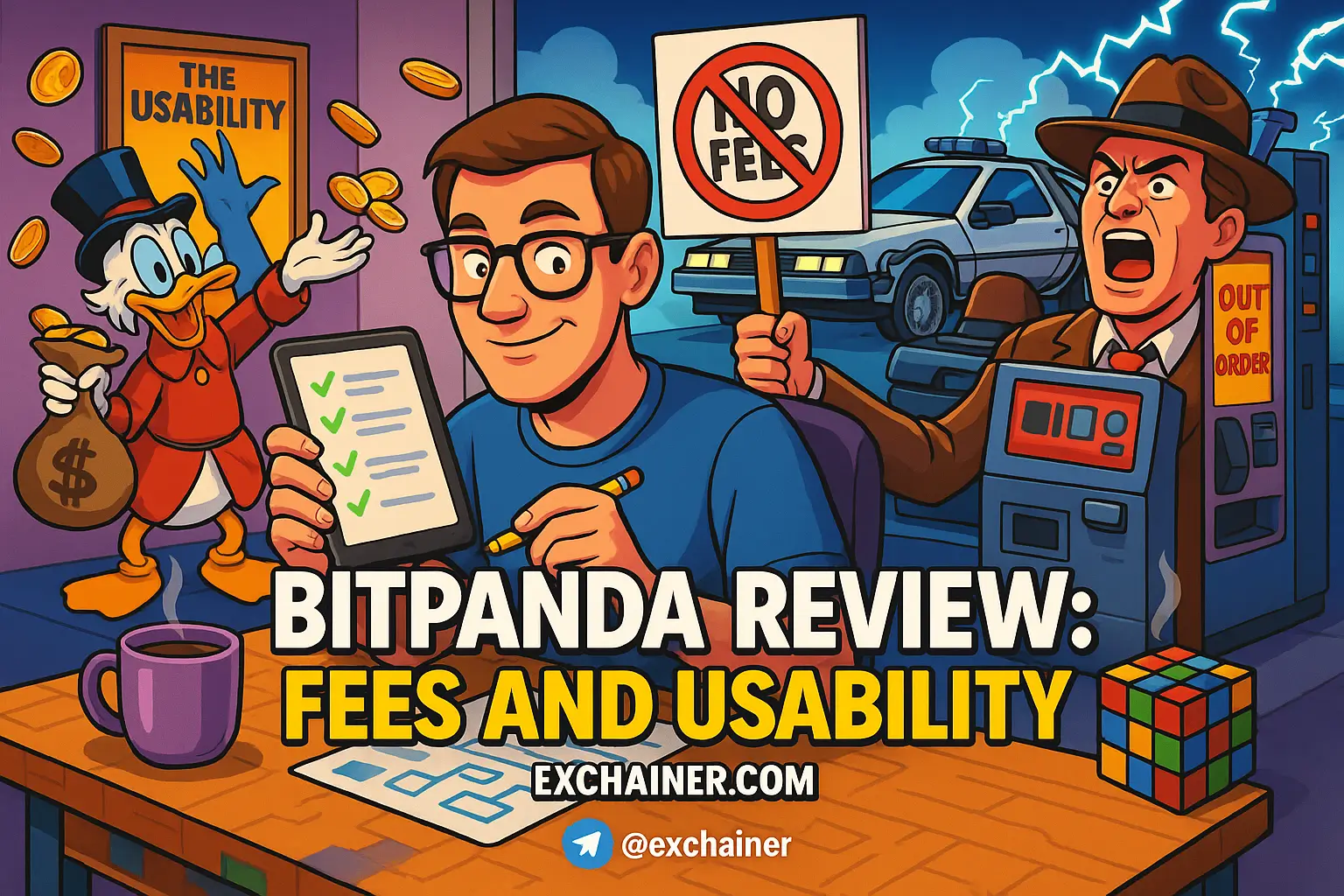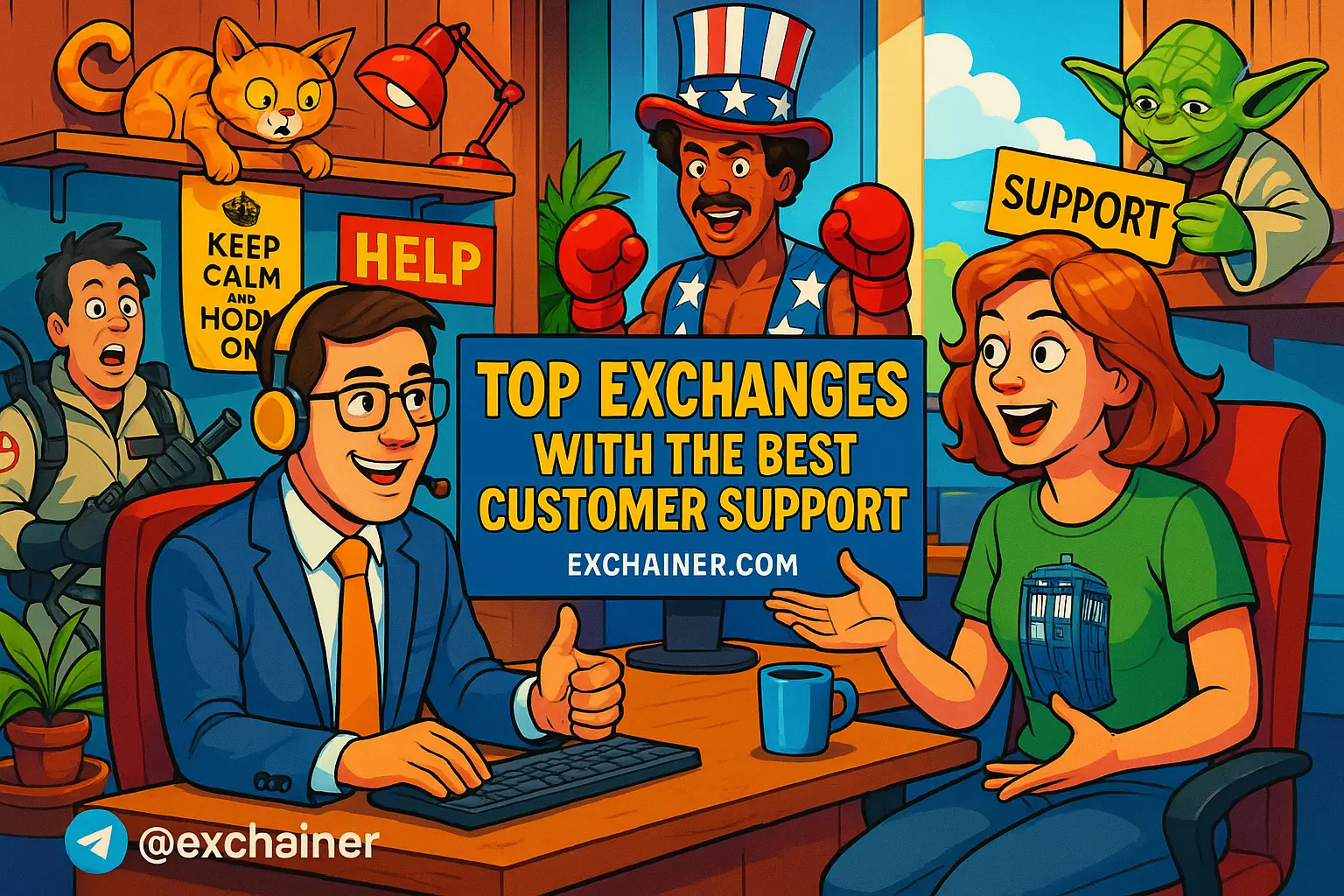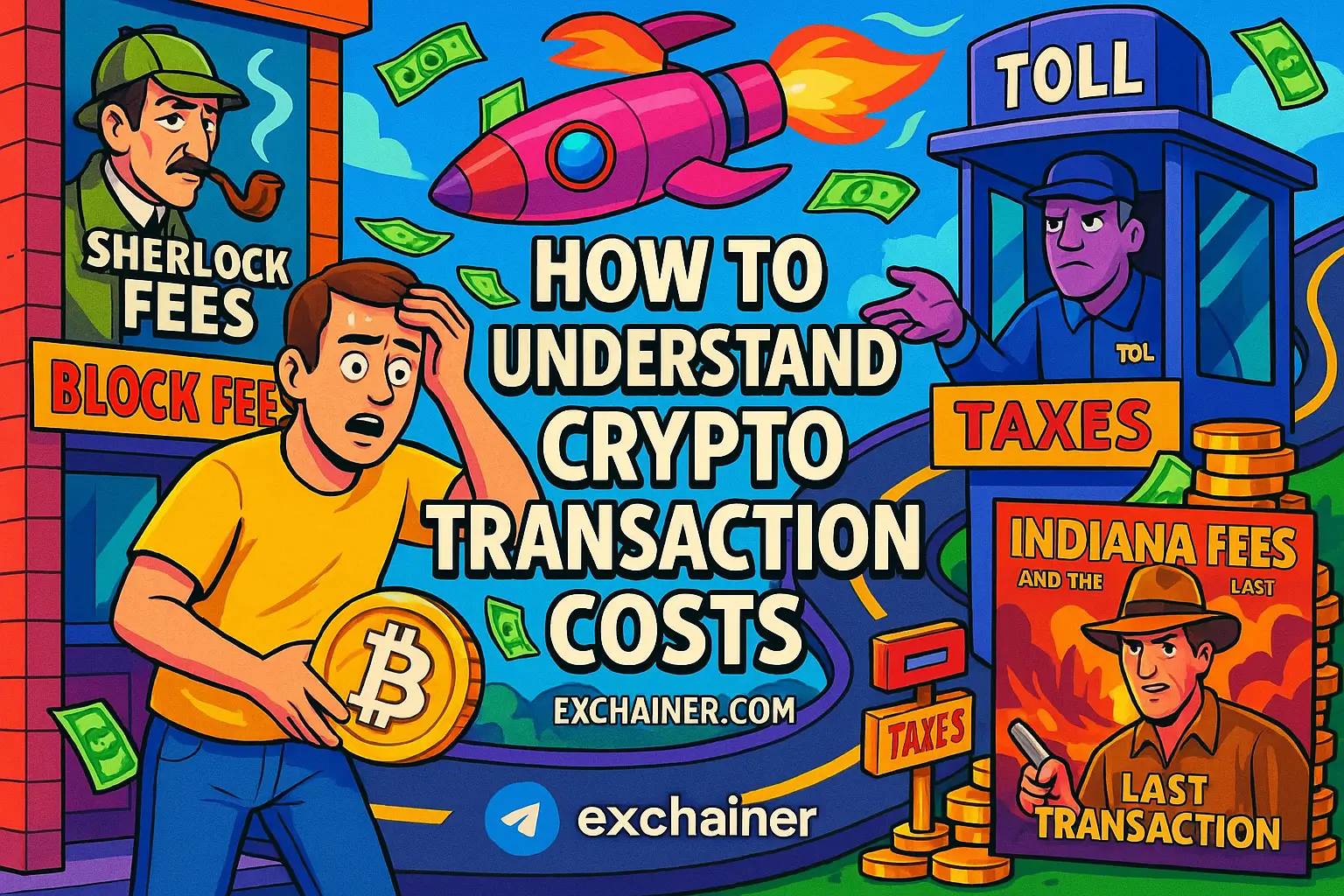Friends, if you’re dipping your toes into cryptocurrency trading or digital asset investing in Europe, one name you’ve probably come across is Bitpanda. It’s one of the largest crypto exchanges on the continent, known for simplifying access to digital currencies for beginners and seasoned traders alike. But let’s be honest—how well does Bitpanda really perform when it comes to fees and usability? For many, navigating the maze of charges and understanding the platform experience can make or break their trading journey. That’s where this Bitpanda review: fees and usability comes in. We’ll unpack everything from how much you actually pay when buying or trading crypto, to the real usefulness of the platform’s features, deposit methods, and security—all in plain, clear terms.
Whether you’re a beginner just setting out, a regular trader comparing exchange costs, someone saving steadily in crypto, or an EU resident hunting for a reliable platform that meets regulatory standards—this review speaks to you. We’ll dive deep into the fee structure including spreads, exchange rates, and withdrawal costs; analyze trading fees versus the Bitpanda Pro variant machine; evaluate payment methods and processing times; and assess how user-friendly Bitpanda is, both on desktop and mobile. Plus, we’ll check out security, verification, and the support quality you can expect. Our insights come from hands-on testing and up-to-date data as of early 2024, with comparisons to other popular platforms to put it all into perspective.
Stick with us through the sections below, and we promise you’ll get a transparent, practical understanding of Bitpanda’s fee landscape and platform usability. By the end, you’ll know if Bitpanda is your go-to or if it’s time to explore other options. And if you want to continue building crypto knowledge beyond this review, we’ll point you to the best Exchainer resources on cryptocurrency basics and detailed exchange comparisons. Ready? Let’s jump into the fee breakdown first and see what’s behind the price tags.
Bitpanda fees breakdown
What fees does Bitpanda charge?
Understanding Bitpanda fees is crucial before committing your cash, so let’s break these down clearly. Bitpanda’s charge structure consists mainly of these components:
Spread: This is a hidden cost embedded in the price you pay when buying or selling assets. Bitpanda includes a spread, which means their buying price is slightly higher and selling price lower than the market rate. The spread varies depending on the asset’s liquidity and market conditions, usually ranging from 0.1% to 1.5%.
Exchange fee: On top of the spread, Bitpanda applies an explicit fee—a percentage of the transaction value. For most cryptocurrencies, this fee hovers around 1.49% per trade on the retail platform, though some assets may have discounts or promotions.
Service and processing fees: Depositing or withdrawing money can involve additional costs, especially for instant payment options like credit cards or third-party services. SEPA bank transfers are often free, but card and e-wallet transactions may carry fees around 1-2.5%.
Custody fees: Bitpanda also provides a custody service for certain tokens, where they securely store your cryptocurrencies on your behalf. While they don’t usually charge explicit custody fees, it’s important to be aware of any conditions linked to staking or interest-earning products, which may have indirect costs.
Conversion fees: When swapping or converting between cryptocurrencies or fiat currencies within the platform, a small fee applies to cover the conversion spread and liquidity provision.
To sum up, the total cost you pay is a combo of implicit costs like spreads, plus explicit fees clearly shown during checkout. Bitpanda’s transparency helps but always check the final amounts before confirming trade.
Example calculations and quick math
Numbers help, right? Let’s take a common scenario:
Scenario 1: Buying €100 worth of Bitcoin via SEPA bank transfer.
You’ll face a spread charge, say 0.75%, meaning the Bitcoin price you get is slightly above market. Practically, that’s about €0.75 cost embedded in the price. On top of this, Bitpanda usually charges a 1.49% exchange fee, which for €100 is €1.49. SEPA deposits are free in most cases, so your total cost is approximately €2.24 or 2.24% for this purchase.
Scenario 2: Placing a large buy order of €5,000 using a credit card.
The spread might tighten a bit on bigger trades, say 0.5%, which is €25, and the explicit fee remains at 1.49% (€74.50). The credit card surcharge may add 2%. This can sum up to roughly €174 or 3.48% total in fees.
Notice how payment method impacts fees drastically. Always pick SEPA or bank transfers for lower costs if you can wait a couple business days.
How to find and verify current fees on Bitpanda
Bitpanda is pretty upfront on fees, but rates can shift depending on market conditions. Here’s how you can always check current Bitpanda fees yourself:
1. Log in to your Bitpanda account and initiate a trade or deposit to see live quotes including spread and explicit fees.
2. Visit Bitpanda’s official fee schedule page, regularly updated for their users.
3. Use the Help Center or FAQ section within Bitpanda’s site for detailed explanations.
Tip: Always consider withdrawal fees on both fiat and crypto sides. Crypto withdrawals incur network fees (miners’ fees) imposed by blockchain protocols, which Bitpanda passes on without markup. Fiat withdrawal fees depend on the destination method—SEPA is usually free but express methods might cost more.
Trading and exchange costs
Bitpanda Pro vs Bitpanda platform fees
Bitpanda offers two main environments: the easy consumer platform and the advanced Bitpanda Pro exchange. The fee structures differ significantly here:
Bitpanda platform (the retail app) is designed for simplicity, bundling fees visibly for users, generally charging around 1.49% per trade. It suits beginners or casual investors who prefer convenience over razor-thin pricing.
Bitpanda Pro caters to more active traders who seek lower fees and tighter spreads. It operates a classic maker/taker fee model, commonly used across professional exchanges:
– Maker fees (adding liquidity) can be as low as 0.10% or drop further with higher volume tiers.
– Taker fees (removing liquidity) range from 0.15% to about 0.25%, depending on monthly trading volume.
You can switch between the two seamlessly, but Pro offers more control and significantly reduced fees for traders handling frequent or large-volume transactions.
Order types, liquidity and implicit costs
Your choice of order type impacts costs beyond listed fees. Market orders execute immediately at the best available price but risk slippage. Slippage is when you pay more than expected due to order book depth or low liquidity.
For example, buying low-volume altcoins during thin market hours can cause slippage of 1-5% or even higher, inflating your overall cost. Limit orders rest in the order book and execute at your set price, avoiding surprises but potentially taking longer or not filling at all.
Liquidity also plays a vital role. Highly liquid pairs like BTC/EUR or ETH/USD usually have minimal slippage, but smaller tokens can see wide spreads and cost jumps during volatile periods.
Tips to minimize trading costs
Here are some pointers to keep trading costs down on Bitpanda:
– Use Bitpanda Pro for better fees and tighter spreads if you trade often or in large volumes.
– Prefer limit orders to control execution price and avoid slippage.
– Trade during peak market hours when liquidity is highest, reducing price fluctuations.
– Move assets off the exchange into your private wallet if you’re not planning to trade, avoiding withdrawal fees and custody risks.
Deposits, withdrawals & payment methods
Supported fiat methods and deposit speed
Bitpanda offers a range of deposit options to cover various European payment preferences:
SEPA transfers are widely used, especially in the Eurozone, enabling free or very cheap deposits taking 1-3 business days.
Bank transfers outside SEPA may be accepted from other countries but expect longer processing times and possible fees.
Credit and debit cards offer instant deposits but incur higher fees (up to 2.5%).
Third-party e-wallets like Skrill are supported in certain regions but can come with variable fees and processing speeds.
Overall, if you’re patient, SEPA bank transfers are your best bet for cheap and reliable deposits.
Deposit and withdrawal fees for fiat and crypto
The fee landscape differs between fiat and crypto moves:
– Fiat deposits: SEPA usually free; cards typically cost 1-2.5%; other local options may charge nominal fees.
– Fiat withdrawals: SEPA withdrawals free or incur a small fee; express withdrawals to cards or third parties usually cost 1-1.5%.
– Crypto withdrawals: Bitpanda charges no markup but passes on blockchain network fees, which vary widely depending on network congestion and token type. For example, Ethereum gas fees fluctuate dramatically.
Here’s a simplified example fee table for clarity:
Payment Method | Deposit Fee | Withdrawal Fee
SEPA Bank Transfer | Free | Free or €0.90
Credit/Debit Card | ~2% | N/A
Skrill | ~1.5% | N/A
Crypto Withdrawal | N/A | Network fees only (e.g., 0.0005 BTC for Bitcoin)
Best practices for moving money in/out of Bitpanda
Considering fees and speed, here are some tips:
– Always use SEPA transfers if you’re in the Eurozone to save on fees and enjoy reasonable deposit speed.
– Avoid multiple small deposits or withdrawals; batch transactions to reduce overall cost.
– Double-check address accuracy before sending crypto withdrawals; blockchain transactions are irreversible.
– Pay attention to network choice for tokens — withdrawing ERC20 tokens on Ethereum might cost more than native chain networks like Binance Smart Chain.
Platform usability & mobile experience
Interface and onboarding for beginners
Bitpanda shines with its user-friendly onboarding flow. Signing up takes minutes, and the KYC process is straightforward, requiring valid ID documents submitted via mobile app or desktop. The dashboard presents your portfolio at a glance, with clear buy/sell buttons and real-time price tracking.
Additionally, Bitpanda offers educational resources through Bitpanda Academy, packed with beginner-friendly content to explain crypto terms, market fundamentals, and investment tips. Alerts and notifications help users monitor price movements without getting overwhelmed.
Mobile app vs web: features and user experience
The mobile app is nearly on par with the web platform in terms of functionality. You can trade, deposit, stake, and manage your portfolio anywhere. The design keeps things simple and intuitive, which is ideal if you want to check prices on the go or execute quick trades.
Some advanced charting tools or order types might only be available on the web or through Bitpanda Pro, but casual users will find all essential functions in the mobile app. Both versions maintain smooth performance and easy navigation across Android and iOS devices.
Accessibility, tools and advanced options
For ongoing investors, Bitpanda provides handy features:
– Recurring buys and savings plans let you dollar-cost average into crypto automatically, perfect for beginners building positions steadily.
– Staking options
– The platform supports crypto swaps for quick token-to-token exchanges within your account.
– Portfolio exports and analytic tools can help advanced users monitor performance or prepare tax documents.
All in all, Bitpanda balances beginner accessibility with enough advanced features to keep regular users engaged.
Security, verification & customer support
Account security measures
Bitpanda takes security seriously. They offer two-factor authentication (2FA) to secure accounts beyond passwords, ensure most crypto assets are held in cold storage wallets offline to prevent hacks, and have regular security audits to identify vulnerabilities.
While Bitpanda does not explicitly publish insurance coverage details like some exchanges, their compliance with European regulations means robust safeguards are in place. However, no exchange is risk-free, so users should consider keeping significant holdings in private wallets.
Verification, limits and compliance
Bitpanda operates under strict EU regulations, requiring Know Your Customer (KYC) verification. Users must upload identity documents, and compliance tiers determine deposit and withdrawal limits.
Higher verification levels unlock larger transaction thresholds, helpful for active traders or high-net-worth investors. The process is clear and standardized, preventing unnecessary delays.
Customer support and dispute resolution
Support is available via email and a comprehensive online help desk with FAQs and guides. Bitpanda also maintains social channels for updates. Typical response times are within 24-48 hours, but some users report longer waits during peak volumes.
Tips for smooth support interaction: clearly explain your issue, provide relevant screenshots, and be patient during busy periods.
Conclusion
Wrapping up our Bitpanda review: fees and usability, the platform stands out as a solid, user-friendly option for European crypto enthusiasts. Fees are transparent but tend toward the higher side compared to pure crypto spot exchanges. The embedded spreads plus explicit trading charges mean casual investors should be mindful of costs, especially when using instant deposit methods like cards. For active or cost-conscious traders, Bitpanda Pro offers competitive fee tiers that make a tangible difference.
The platform’s usability is impressive. Beginners benefit from smooth onboarding, educational support, and handy tools like savings plans and staking. Mobile and web experiences are consistent, supporting both casual users and intermediate traders. Security protocols meet industry standards, though prudent users should always consider personal custody for substantial holdings.
If you’re a European resident seeking a well-regulated, beginner-friendly gateway to crypto, Bitpanda deserves serious consideration. For traders more focused on low fees and sophisticated order types, Bitpanda Pro or other specialized exchanges might be better fits.
Actionable tips: to save on costs, prefer SEPA deposits, leverage Bitpanda Pro for frequent trades, and use limit orders to minimize slippage. Enable 2FA for your safety and experiment with savings plans to build your portfolio smartly.
Thinking about alternatives? Crypto exchanges like Binance or Kraken offer lower fees but different usability and regulatory profiles that might suit non-EU users or advanced traders better.
Before you make any moves, always verify current fees and terms directly on Bitpanda’s official website or trusted market data portals like CoinMarketCap. Markets evolve fast, and staying informed protects your investments.
Friends, if this review helped clear your Bitpanda questions, you’re ready to dive deeper into the crypto world. Explore more beginner-friendly guides in our Crypto 101 section, discover detailed Exchange Reviews to compare platforms, or check out handy Tools and Wallets to boost your trading experience. Your crypto journey starts here—let’s keep learning together!






